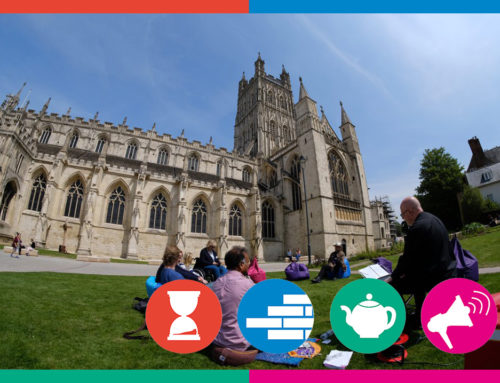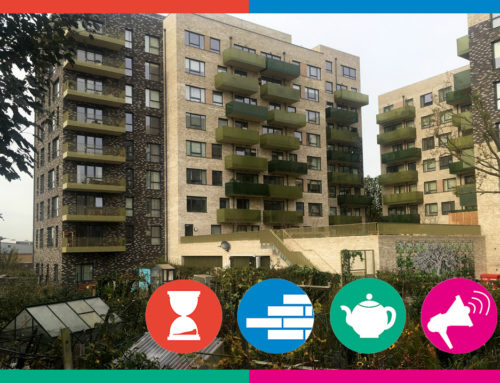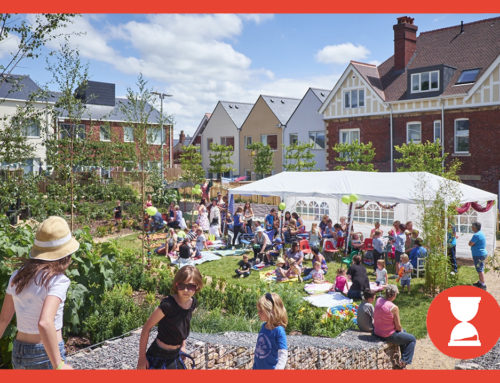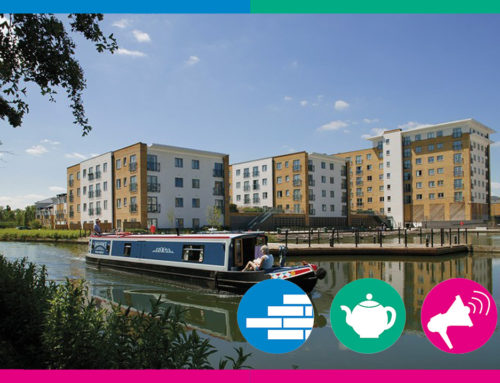Berry Hill, Christchurch and Edge End Neighbourhood Development Plan
This case study is an example of Neighbourhood Development Plan, which enables the community to respond constructively to future challenges and develop sustainable communities for their area.
Location: West Dean Parish, Forest of Dean
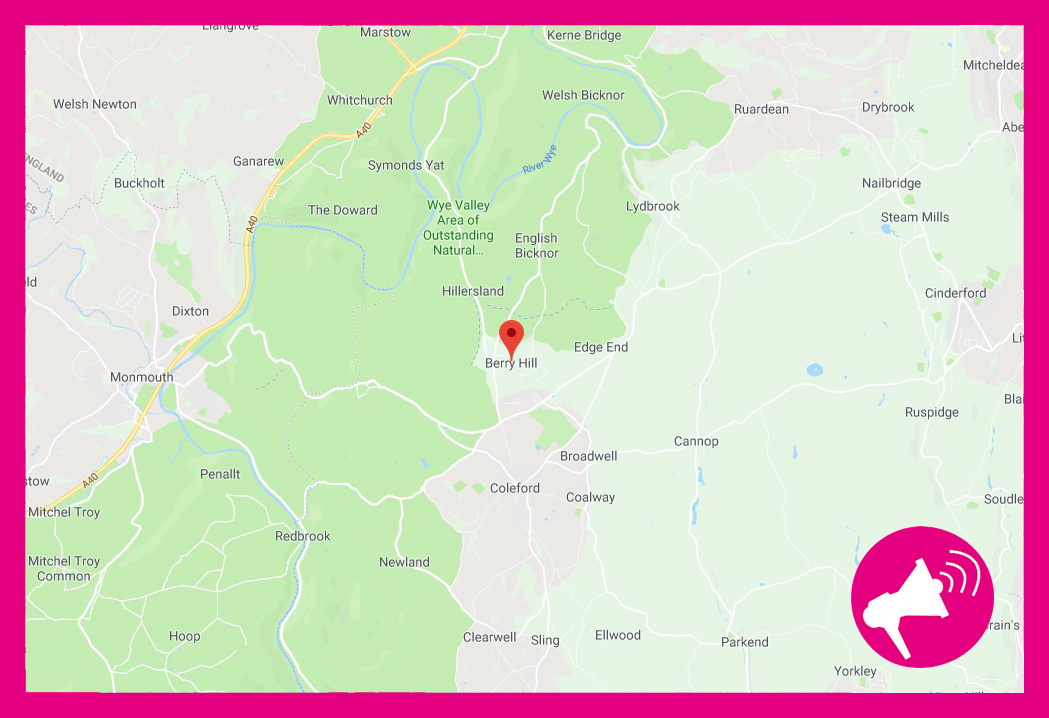
About
The Berry Hill, Christchurch and Edge End Neighbourhood Development Plan (NPDs) is one of nine NPDs in the Forest of Dean District, two of these are in the area covered by West Dean Parish Council.
The NDP was adopted in March 2018 and made part of the Forest of Dean District’s development plan. It was supported by 82% of those voting in the referendum.
“Our Neighbourhood Development Plan is a unique and very special document designed to enable the community to respond constructively to future challenges and develop sustainable communities for the area. It encapsulates the work of a group of dedicated representatives from a broad range of the community who have driven this initiative forward in a cohesive and cooperative way for the benefit of the whole community and beyond.” (1)
Project details
West Dean is the largest civil parish in the Forest of Dean District area. The Berry Hill, Christchurch and Edge End area includes three villages, and is near to woodland and forest areas. The area has some outstanding views and is the gateway to the Wye Valley.
The motivations behind NDP were to address community concerns about the loss of employment, leisure and cultural facilities and about the future for a site owned by the Homes and Communities Agency, which had been a college, theatre and sports facility.
One of the benefits of the NDP process is to consult residents and establish clarity about the type of housing development that will be supported by local communities. This means that it becomes part of the decision making process about planning applications, and when developments come forwards there has already been some local discussion about building new homes, and discussion can focus more clearly on the detail of the particular proposal, rather than the rationale for new housing itself.
The Berry Hill, Christchurch and Edge End Plan NPD will run from 2016-2026. It is in conformance with the Forest of Dean District Council’s Core Strategy, which is effective until 2026 and the National Planning Policy Framework.
The vision for the NDP puts a strong focus on sustainable design. The aims include:
• To work with designers, developers and landowners from the outset in shaping developments that are in keeping with the ambience of the area and that will help improve the emotional, spiritual and economic well being of residents, as well as promoting tourism.
• To provide a supply of housing that complies with local strategic requirements, respects the integrity of the area’s unique landscape, respects its special places and provides appropriate homes for members of the community.
• To ensure that sustainable development will support and enhance our community and its infrastructure.
The NDP sets out five housing policy objectives:
1. Small-scale developments that will meet the demands of the local community to return to low-density housing, with traditional style houses and productive family gardens.
2. To plan for a mix of housing based on current and future demographic and market trends and the needs of different age groups in the community, such as, but not limited to, families with children, older people and people with disabilities as well as people wishing to build their own homes.
3. Developments, which provide local affordable housing to include affordable rent and sheltered housing for people in local employment, will be supported. All developments of ten or above properties shall include 40% affordable/social housing.
4. Ensure that new developments or re-developments are of high-quality design, built to high sustainability standards and reinforce local distinctiveness, which meets the needs of all sections of society.
5. To ensure that the design and location of new developments, conversions and extensions are resilient to the effects of climate change, flooding and take account of sustainable water and sewage management.
The NDP will be delivered and implemented over 20 years by different stakeholders and partners. It is not intended as a perspective document but rather something that will provide direction about development and change in the future.
Key Details
Resources
It has been estimated that the average cost of the entire NPD process is £13,000 (4) although the planning authority is responsible for the costs of the examination and neighbourhood plan. In this case support from GRCC was very important.
Community involvement
An area of Berry Hill, Christchurch and Edge End was designated as a Neighbourhood Area on 17 January 2013. The steering group led the consultation process, which included a Housing Needs survey, a community-led questionnaire and open consultation events in 2013 and 2014.
West Dean Parish Council submitted the NDP to the Council on 12 April 2017. The Berry Hill, Christchurch and Edge End NDP and its supporting documents were available for comment during the statutory consultation period from 23 May 2017 to 4 July 2017 and the plan and representations made during the consultation period were submitted to the examiner on in July 2017.
The Referendum for the Berry Hill, Christchurch and Edge End Neighbourhood Development Plan was held on 15th February 2018.
Who are the key stakeholders involved?
• The Plan was produced by a Steering Group, including
• Forest of Dean District Council
• West Dean parish councillors
• Coleford Town Council
• Homes England
• The Forestry Commission
• Berry Hill Rugby Club
• Berry Hill Memorial Institute
• Berry Hill Under 5s
• Berry Hill Primary School
• Lakers School
• Community volunteers
• The group was advised by Gloucestershire Rural Community Council
So what?
Impact: What are the outcomes? Who benefits?
The benefits of a robust NDP process should be for residents – in articulating their views and aspirations. And also for agencies, in providing a framework for development in the area.
For the planning authority, it means that initial soundings have been taken about the nature of development that will be supported by residents, and the fact that this has been through an open referendum gives legitimacy to this process.
For developers there is a clear framework setting the parameters for planning decisions.
What are the risks and challenges for initiating and also maintaining this initiative?
The challenges of neighbourhood planning are to combine good community engagement with accurate and up to date information about needs and assets in local areas, and from these to produce a set of recommendations that meet community approval (as expressed through a referendum) whilst aligning with local strategic plans.
Key learning
The Housing Needs Survey – supported by GRCC but carried out with the local community – was critical in building the evidence for the housing need in the area.
Source/s of information:
1. Forest of Dean; https://www.fdean.gov.uk/media/4661/berry-hill-christchurch-and-edge-end-neighbourhood-development-plan.pdf
2. Forest of Dean; https://www.fdean.gov.uk/residents/communities/neighbourhood-planning/berry-hill-christchurch-and-edge-end-neighbourhood-plan/
3. Christchurch Berry Full Case Study; http://www.acre.org.uk/cms/resources/christchurchberry-hilledge-end-np.pdf
4. One Neighbourhood Planning; https://www.ourneighbourhoodplanning.org.uk/storage/resources/documents/How_to_resource_your_neighbourhood_plan4.pdf


